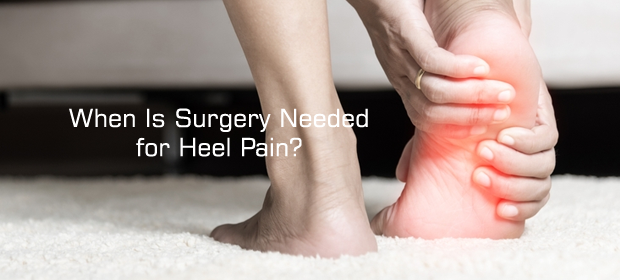When Is Surgery Needed for Heel Pain?
When Is Surgery Needed for Heel Pain?

Heel pain is a common issue that can cause pain whilst standing or walking. There are many cases where heel pain can be managed by way of conservative treatments such as rest, orthotics, and stretching. However, there are cases where you need surgery, so you get lasting relief from the problem.
Understanding heel pain
Before you go for surgery on your heel pain, you must understand the problem and its underlying causes. The most prominent conditions when you get heel pain are plantar fasciitis, heel spurs, Achilles tendonitis, and stress fractures. These conditions often happen because of problems such as overuse, injuries, and biomechanical issues.
Conservative treatment options
In most cases of heel pain, the foot and ankle specialist usually recommend conservative options in the beginning to deal with the same, such as the following:
- Rest
- Stretching exercises
- Orthotic devices
- Physiotherapy
- Shockwave therapy
- NSAIDs (non-steroidal anti-inflammatory drugs)
You may promote healing and alleviate tension in the affected area by stretching your plantar fascia and calf muscles. You may also use shoe inserts or custom orthotics to get the necessary support and correct biomechanical issues leading to heel pain.
Indications for surgery
There are certain situations where you need to be surgically operated on to deal with your heel pain, such as failure of conservative treatments, tendon ruptures or tears, structural anomalies, and chronic conditions.
Types of surgical procedures
Several surgical procedures are used commonly to relieve your heel pain, and the most prominent among them are plantar fascia release, Achilles tendon repair, heel spur removal, and foot realignment surgery.
In plantar fascia release the surgeons release tension in the ligament to improve mobility and relieve pain.
If your Achilles tendon is completely, or partially torn, you might need surgery to repair it. This can be done through both minimally invasive and open surgeries.
If your heel spur causes debilitating pain, your surgeon will remove it so that the source of discomfort can be removed.
Conclusion
Surgery is usually not the first treatment option for heel pain, but it becomes necessary in cases where conservative treatments do not do the trick. This is also the case when you experience structural abnormalities that have to be corrected, as it is with severe and persistent heel pain.



